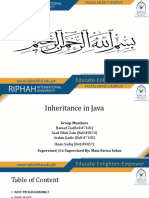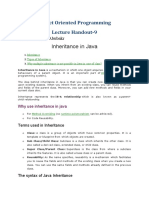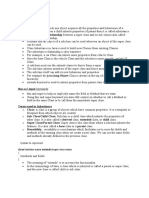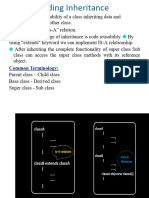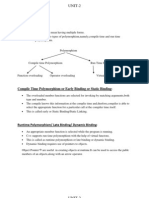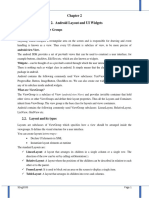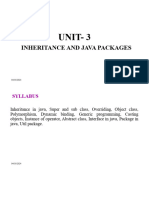0% found this document useful (0 votes)
36 views17 pagesInheritance
Inheritance in Java allows the creation of new classes based on existing ones, enabling code reusability and method overriding. There are several types of inheritance including single, multilevel, hierarchical, multiple (through interfaces), and hybrid inheritance. While inheritance offers advantages like code reuse and abstraction, it can also introduce complexity and tight coupling.
Uploaded by
boomikarithika18Copyright
© © All Rights Reserved
We take content rights seriously. If you suspect this is your content, claim it here.
Available Formats
Download as PPTX, PDF, TXT or read online on Scribd
0% found this document useful (0 votes)
36 views17 pagesInheritance
Inheritance in Java allows the creation of new classes based on existing ones, enabling code reusability and method overriding. There are several types of inheritance including single, multilevel, hierarchical, multiple (through interfaces), and hybrid inheritance. While inheritance offers advantages like code reuse and abstraction, it can also introduce complexity and tight coupling.
Uploaded by
boomikarithika18Copyright
© © All Rights Reserved
We take content rights seriously. If you suspect this is your content, claim it here.
Available Formats
Download as PPTX, PDF, TXT or read online on Scribd
/ 17
















